Starting from the analysis of NB-IoT Internet of Things technology, it introduces the physical layer of the NB-IoT system and its coexistence with other systems, introduces the LTE system and GSM system, and analyzes the necessity of research on their impact on the NB-IoT Internet of Things system. . This paper mainly studies the impact of the LTE system on the NB-IoT IoT system, which is divided into three scenarios: stand-alone, guard-band and in-band. It analyzes the throughput loss and SINR loss; and studies the impact of the GSM system on the NB-IoT system. The impact of IoT IoT systems is also calculated throughput loss and SINR loss. The above research shows that the traditional cellular network has little impact on the NB -IoT Internet of Things system.
NB-IoT (Narrowband Internet of Things) is a new feature introduced by 3GPP. In the deployment of future wireless systems, NB-IoT systems will be adjacent to other wireless communication systems in the same geographical area to improve the use of spectrum resources. At the same time, due to the nonlinear characteristics of the transmitter and receiver of communication equipment, mutual interference between the two systems may occur [1]. Considering the impact of coexistence between systems is very important for spectrum planning and how to implement network planning to improve system capacity and spectrum utilization.
1 NB-IoT Internet of Things
1.1 NB-IoT Internet of Things System The NB-IoT system is a CIoT access technology defined by the 3GPP organization. As a complement to LTE-M, NB-IoT provides a complete CIoT solution [2]. Compared with traditional cellular network systems , NB-IoT systems have the following characteristics.
(1) Improve indoor coverage, with 20 dB coverage enhancement over existing cellular network systems.
(2) Support large-scale low-throughput devices.
(3) Support low-complexity devices.
(4) Support low-power devices.
(5) Support low delay sensitivity.
1.2 NB-IoT IoT coexists with other systems. The NB-IoT system supports three different deployment modes as follows:
(1) Stand-alone scenario, an independent scenario that occupies independent spectrum resources, such as using the spectrum of the GERAN system to replace one or more GSM carriers.
(2) In-band scenario, an in-band scenario that occupies resource blocks in the normal LTE system carrier.
(3) Guard-band scenario: The guard-band scenario occupies unused resource blocks in the LTE system guard band.
2 Research on the impact of LTE system on NB-IoT Internet of Things system Long-term evolution (LTE) is the long-term evolution plan of the UMTS technical standard developed by the 3GPP organization.
2.1 Impact Assessment Criteria For the uplink and downlink of the LTE system, if the relative throughput loss is less than 5%, it is considered that the coexistence performance loss requirements are met. Throughput loss determines the performance loss of the LTE system by observing the ACLR curve . First, after simulating the single system throughput Thrsingle, the corresponding link interference of the NB-IoT system is introduced. At this time, the throughput of the LTE system is obtained. The system throughput loss generated by the NB-IoT system is calculated as shown in Equation (1): Throughputloss=1-Thrmulti/Thrsin gle (1) Observe the performance of the NB-IoT system through the SINR curve. First, the SINR curve of a single system is simulated, and the link impact of the corresponding LTE system is introduced. Similarly, the SINR curve of the NB-IoT system is obtained. Compared with the no-impact case, observing the loss of the SINR curve in the affected case shows that if the loss of SINR is less than 1dB, the performance indicators of system coexistence can be met.
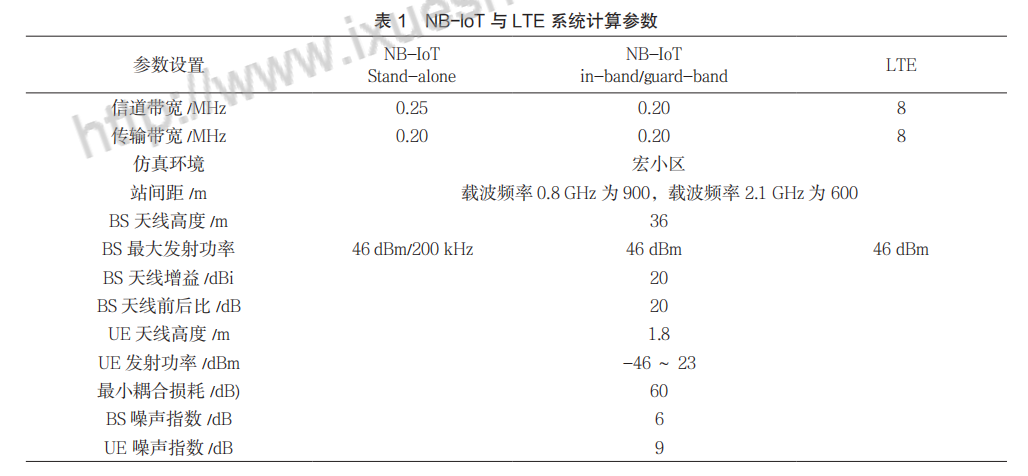
2.2 Calculation parameters From the perspective of large-scale coexistence scenarios, in stand-alone scenarios, the impact of uplink and downlink coexistence of NB-IoT and LTE systems needs to be considered. In in-band and guard-band scenarios, NB- IoT needs to be considered. System and LTE system coexistence impacts at the uplink.
2.3 Result Analysis 2.3.1 Stand-alone scenario downlink simulation results In the stand-alone scenario, the carrier frequencies are 900 MHz and 2 000 MHz. On the downlink, the subcarrier spacing of the NB-loT system is unified to 20 kHz, and the downlink coexistence situation is shown in Table 2.
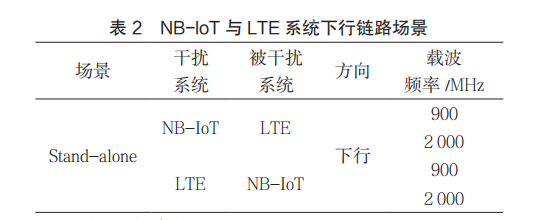
(1) The frequency is 900MHz. Calculate the throughput loss of the LTE system. Figure 1 shows the simulation results of the throughput loss of the LTE system when the carrier frequency is 900 MHz. The SINR distribution of the NB-IoT system is evaluated by estimating the system component loss criteria in the coexistence situation. Figure 2 shows the S1NR distribution of the NB-IoT system when the carrier frequency is 900 MHz.
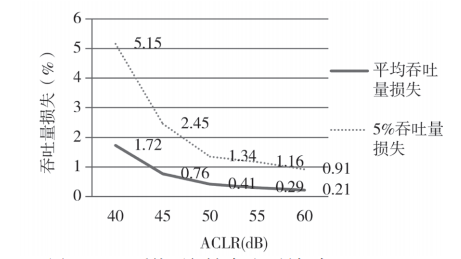
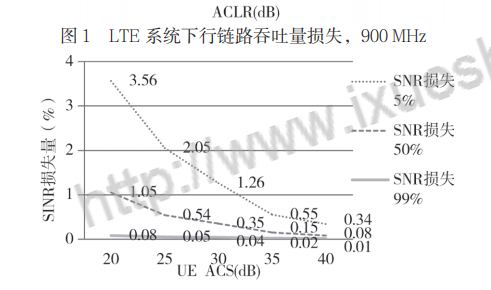
(2) Frequency is 2 000 MHz. When the carrier frequency is 2 000 MHz, the throughput loss affected by the coexistence of the LTE system is shown in Figure 3. When the carrier frequency is 2 000 MHz, the SINR distribution of coexistence interference in the NB-IoT system is shown in Figure 4.
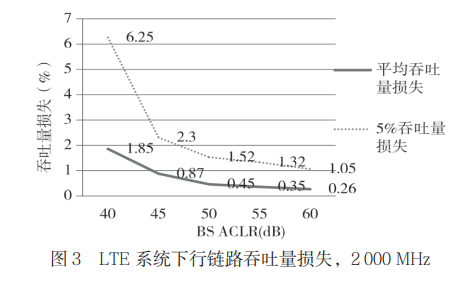
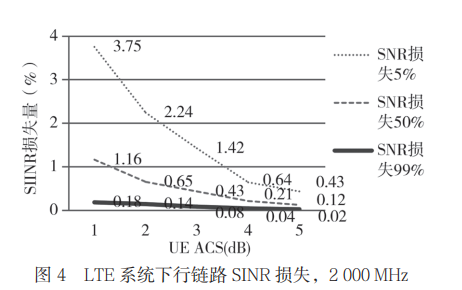
4 LTE system downlink SINR loss, 2 000 MHz On the NB-IoT and LTE system coexistence simulation platform, when running the simulation program, the statistical impact results are bidirectional. The GSM system BS template can be applied to the NB-IoT system, and within the interference band of the LTE system, the frequency compensation of the NB-IoT system center frequency is considered to be greater than 600 kHz and the equivalent ACLR is considered to be greater than 60 dB. Therefore, the LTE system throughput loss is less than 1%. Although the UE ACS of the GSM system is assumed to be applicable to the NB-loT system, within the influence bandwidth of the LTE system, the frequency compensation of the center frequency of the NB-loT system is greater than 600 kHz and the equivalent ACS is considered to be greater than 58 dB. Therefore, the SINR of the NB-loT system is small compared to the SINR loss that has no impact. The above analysis shows that NB-loT systems and LTE systems can coexist on the downlink in independent scenarios and meet system performance requirements when coexisting.
2.3.2 Stand-alone scenario uplink simulation results In the stand-alone scenario, the carrier frequencies are 900 MHz and 2 000 MHz, and the link coexistence is shown in Table 3.
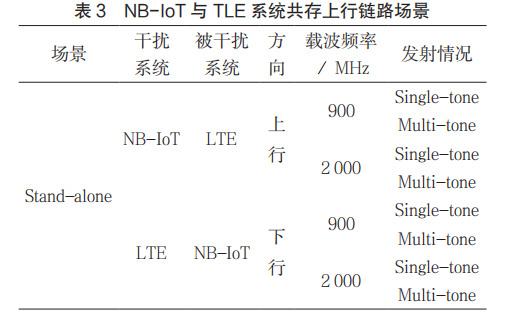
It is assumed that the UE ACLR of the NB-IoT system is flat within the bandwidth of the LTE affecting system and has a value of 40 dB. From the simulation results, the throughput loss of the LTE system is less than 5%. Within the influence bandwidth of the LTE system, the frequency compensation of the center frequency of the NB-IoT system is greater than 600 kHz, and the equivalent ACLR is greater than 60 dB. Therefore, under single-tone and multi-tone transmission of the NB-IoT system, the throughput loss of the LTE system is very small.
Assuming that the BS ACS of the GSM system is suitable for the NB-IoT system within the interference bandwidth of the LTE system, the frequency compensation of the center frequency of the NB-IoT system is greater than 600 kHz, and the equivalent ACS is greater than 58 dB. Therefore, under single-tone and multi-tone transmission of the NB-IoT system, the SINR loss of the NB-IoT system is small.
Based on the above analysis, if the ACLR of the NB-IoT system is greater than 40 dB and the ACS is greater than 40 dB, the performance requirements can be met when the uplinks between NB IoT and LTE systems coexist in the stand-alone scenario.
2.3.3 Guard-band scenario simulation results In the guard-band scenario, the coexistence between NB-IoT and LTE systems is somewhat different from the stand-alone scenario. Table 4 shows the coexistence scenario between NB-IoT and LTE systems.
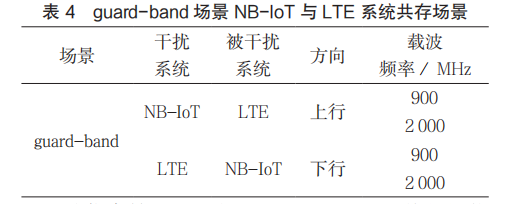
It can be seen from the simulation results that the performance parameters of the NB-IoT and LTE systems are within the allowable range, and the NB-IoT and LTE systems can coexist in the guard band scenario.
In the stand-alone scenario downlink, the LTE system throughput loss is less than 1%. The SINR of the NB-loT system is small compared to the SINR loss which has no impact. In the stand-alone scenario uplink, the SINR loss of the NB-IoT system is very small. In the guard-band scenario, the performance degradation of NB-IoT and LTE systems is within the allowable range in the set leakage model, and NB-IoT and LTE systems can coexist in the guard -band scenario. In the in-band scenario, the performance degradation of NB-IoT and LTE systems is within the allowable range, and the NB-IoT and LTE systems can coexist in the in-band scenario in setting the leakage model.
NB-IoT and GSM systems can coexist on the downlink in stand-alone scenarios. The UE ACLR of the NB-IoT system is flat within the interference band of the GSM system, with a value of 20 to 25 dB. and GSM systems can coexist in the uplink in the stand-alone scenario.
Author of this article: Yu Xiaoyang
Mots-clés : nb-iot dtu